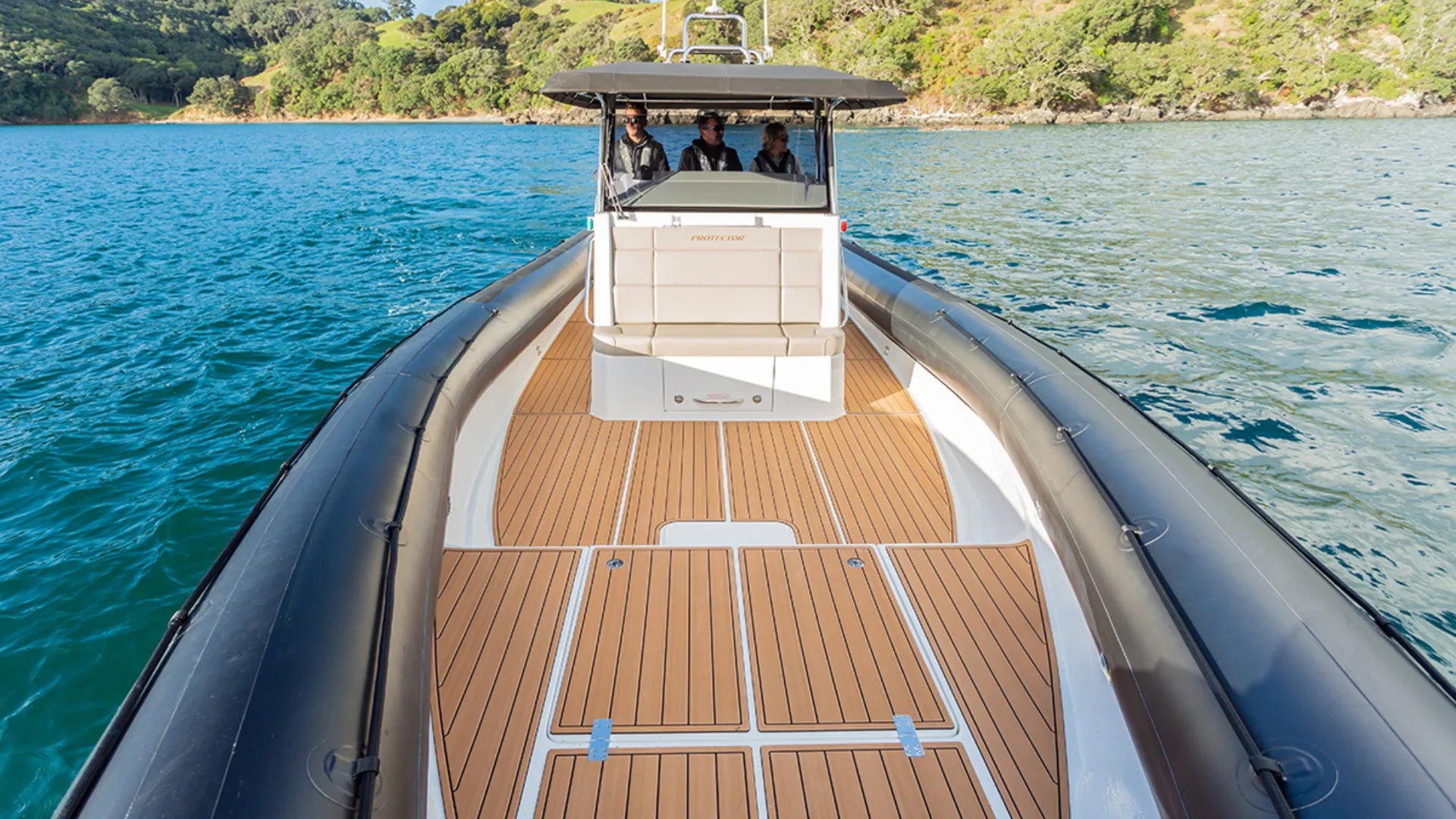For boat owners, safety is always the highest priority. Two of the most common hazards at sea are:
-
Slipping on wet surfaces
-
Electrical shock risk (from faulty wiring causing AC leakage into the water, known as Electric Shock Drowning or ESD)
Traditional marine flooring like carpet, vinyl, or painted fiberglass often fails to address these dangers effectively. That’s where EVA foam boat flooring comes in—offering superior non-slip, shock-absorbing, and insulating safety.
Conquering the Slippery Deck
A wet deck is an accident waiting to happen. Surfaces like fiberglass, vinyl, or painted wood become slick with just a splash of water, fish slime, or spilled fuel.
EVA foam marine decking tackles this problem with built-in safety:
-
Textured non-slip grip: EVA’s slightly soft, cushioned surface creates high friction for secure footing—whether barefoot or in shoes.
-
Drainage patterns: Many EVA mats are molded with diamond plates or teak-like grooves that channel water away, preventing dangerous pooling.
-
Cushioning: Falls onto EVA are softer and less likely to cause injury compared to fiberglass or metal, providing extra protection for children and anglers.
Providing a Shield Against Electrical Hazard
Another silent danger is Electric Shock Drowning (ESD)—caused by stray current from faulty dock wiring or onboard appliances.
EVA foam flooring adds a vital layer of protection:
-
EVA is a dielectric insulator (it does not conduct electricity).
-
A full EVA deck system creates a protective barrier between passengers and the boat’s conductive hull.
-
This helps isolate users from stray voltage and adds a passive safety layer.
⚠️ Important: EVA flooring is not a substitute for proper marine electrical safety measures (like galvanic isolators and inspections), but it significantly reduces risk exposure.
Beyond the Basics: Extra Safety Benefits of EVA Foam
-
Thermal Insulation: EVA remains cool under direct sunlight (preventing burns) and warmer in cold weather.
-
Noise & Vibration Reduction: EVA absorbs engine vibration and sound, reducing fatigue. A less tired captain is a safer captain.
-
Hygiene: Closed-cell EVA resists water absorption, preventing mold, mildew, and bacterial growth that can make decks slippery.
Conclusion: Safety Starts Underfoot
By choosing EVA foam boat flooring, safety-conscious boaters proactively reduce the biggest risks at sea—slipping and electrical shock hazards. Combined with thermal insulation, anti-vibration comfort, and easy maintenance, EVA isn’t just a cosmetic upgrade. It’s a foundational investment in passenger safety and well-being.
FAQs: EVA Foam Flooring & Safety
1. Is EVA foam really non-slip when wet?
Yes. EVA’s textured surface and drainage patterns ensure strong grip even in splash-heavy conditions.
2. Can EVA flooring prevent electric shock?
It cannot replace electrical safety devices, but its insulating properties provide a protective barrier against stray currents.
3. Is EVA safer than teak or fiberglass?
Yes. EVA is softer, cooler under sunlight, non-slip when wet, and provides cushioning against falls.
4. Does EVA foam flooring reduce fatigue?
Yes. Its shock absorption reduces vibration and noise, helping passengers and operators stay comfortable and alert.
5. Is EVA foam flooring hygienic?
Absolutely. Its closed-cell structure resists mold and mildew growth, unlike carpet or wood.

Share:
Step-by-Step Installation Guide for EVA Boat Flooring
Step-by-Step Installation Guide for EVA Boat Flooring